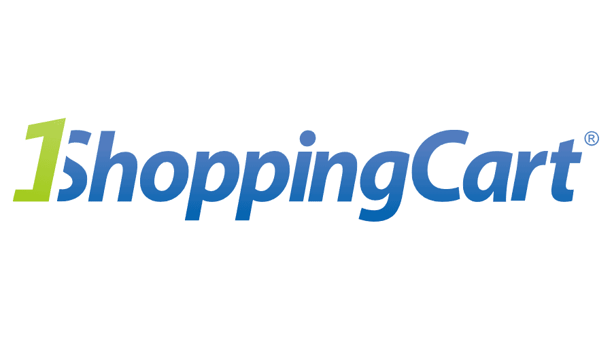
In 2021, around 2.14 billion shoppers made purchases online.
In just a decade or two, we've witnessed a monumental shift in how we shop.
Gone are the days of trawling through physical markets and stores in search of the perfect purchase. Now, with just a few taps on our smartphones, we can buy digital products and do business online - all from the comfort of our own sofas.
The Rising Trends of Digital Products
Over the past few years, there has been a significant increase in the number of businesses selling digital products. The digital products industry is booming, from software and music to ebooks and online courses.
Here are some of the reasons behind this trend:
Low Overhead Costs
One of the primary reasons for the rise in digital products is the low overhead costs. Unlike physical products, digital products do not require any inventory or storage space, significantly reducing production and distribution costs.
High-Profit Margins
Because the cost of producing and distributing digital products is low, businesses can enjoy higher profit margins. This allows them to reinvest in the business, develop new products, and expand their offerings.
Global Reach
Digital products can be sold to customers worldwide, providing businesses with an enormous potential customer base. This is particularly true for businesses that sell digital products online, where the internet has made it easier than ever to reach people from all corners of the globe.
Convenience
Customers appreciate the convenience of purchasing and accessing digital products immediately. They don't have to wait for shipping or deal with any physical products that take up space in their homes.
Evolving Consumer Habits
With the increasing use of technology, more and more consumers are comfortable with digital products, and many prefer them to physical products. This shift in consumer habits has encouraged businesses to adapt and offer digital products to meet their customers' needs.
Need of Marketing for Digital Products
Online marketing has become an essential tool for businesses that sell digital products in today's digital age.
With more and more consumers turning to the internet for their shopping needs, online marketing offers a range of benefits that cannot be ignored.
Here are some reasons why you should look for the best way to sell digital downloads:
Reach a Global Audience
One of the primary benefits of online marketing is the ability to reach a global audience. Businesses can use various online marketing channels to promote their digital products, such as social media, search engine optimization, email marketing, and paid advertising.
With a well-executed online marketing strategy, businesses can sell their digital products to customers all over the world without the need for a physical storefront.
Targeted Marketing
Online marketing allows businesses to target their ideal customers with precision.
Businesses can identify their ideal customers through data-driven marketing strategies and tailor their marketing efforts to appeal specifically to them. This can help to increase conversion rates and sales.
Cost-Effective
Online marketing is often more cost effective than traditional marketing methods. For example, digital marketing channels such as social media, email marketing, and search engine optimization can be much less expensive than traditional advertising channels such as print, television, or radio advertising.
This makes it easier for small businesses to compete with larger businesses on a level playing field.
Measurable Results
Online marketing offers measurable results that allow businesses to track the effectiveness of their marketing efforts. Through tools such as Google Analytics and social media analytics, businesses can track their website traffic, engagement rates, and conversion rates, among other metrics.
This information can then be used to adjust marketing strategies and optimise results.
Building Relationships
Online marketing offers an opportunity to build relationships with customers. By creating engaging and valuable content, businesses can establish themselves as experts in their field and build trust with potential customers. This can lead to increased brand loyalty and repeat business.
How to Create an eCommerce Marketing Plan?
In today's fast-paced digital world, having an eCommerce marketing plan is crucial for online businesses to stand out and succeed. With a well-crafted marketing plan, you can effectively promote your products and services or sell digital downloads online, reach your target audience, and increase sales. In this article, we'll take a closer look at the steps you can take to write an eCommerce marketing plan.
Step 1: Define Your Brand
Your brand is the foundation of your eCommerce marketing plan. Start by defining your brand's mission, values, and personality. Then, consider what makes your brand unique and how you can convey that through your marketing.
Step 2: Know About Your Target Audience
Understanding your target audience is key to creating a successful eCommerce marketing plan. First, identify your ideal customer's demographics, interests, pain points, and purchasing behavior. This will help you tailor your marketing messages and tactics to resonate with them.
Step 3: Perform a Competitor and SWOT Analysis
Analyze your competitors' strengths, weaknesses, opportunities, and threats (SWOT) to identify where you can differentiate yourself. Look for market gaps and ways to stand out from the competition.
Step 4: Find Your Value Proposition
Your value proposition is what sets you apart from your competitors and attracts your target audience. Identify your unique selling points and how they solve your ideal customer's pain points.
Step 5: Identify Your Marketing Budget
Determine how much you can allocate to your eCommerce marketing plan. Consider the cost of your marketing tactics, tools, and resources.
Step 6: Choose Your Marketing Tactics
Choose the marketing tactics that best align with your brand, target audience, and budget. Examples include social media, email marketing, content marketing, search engine optimization (SEO), and paid advertising.
Step 7: Take Account of Your Resources
Consider your available resources, including your team's skills, expertise, technology, and tools. Ensure you have the necessary resources to execute your chosen marketing tactics effectively.
Step 8: Define Your Success Metrics
Identify the key performance indicators (KPIs) that will measure the success of your eCommerce marketing plan. Examples include website traffic, conversion rates, and revenue.
Step 9: Set a Clear Timeframe and Timelines
Set a realistic timeframe for your eCommerce marketing plan, including specific timelines for each marketing tactic. Then, ensure you have enough time to execute and optimise your marketing plan.
Step 10: Set up an Audit Cycle
Regularly audit and evaluate the effectiveness of your eCommerce marketing plan. Analyze your KPIs, adjust your tactics as needed, and refine your strategy to improve its performance continuously.
By following these steps, you can create an effective eCommerce marketing plan that helps you reach and engage your target audience, promote your brand, and increase sales. Remember to regularly evaluate and adjust your plan to keep up with changing market trends and your customers' needs.
In Conclusion
Developing a marketing strategy is critical for your eCommerce store's success when you are trying to figure out how to sell digital downloads online.
By defining your brand, identifying your target audience, and creating a comprehensive marketing plan, you can effectively reach your ideal customers and drive sales.
It's important to regularly evaluate your marketing performance, adjust your tactics as needed, and stay up-to-date with the latest trends in the digital marketplace.
With a well-crafted marketing strategy, you can differentiate yourself from the competition and grow your eCommerce business.
Remember to remain flexible and adaptable, always willing to try new approaches to optimise your digital marketing efforts.






